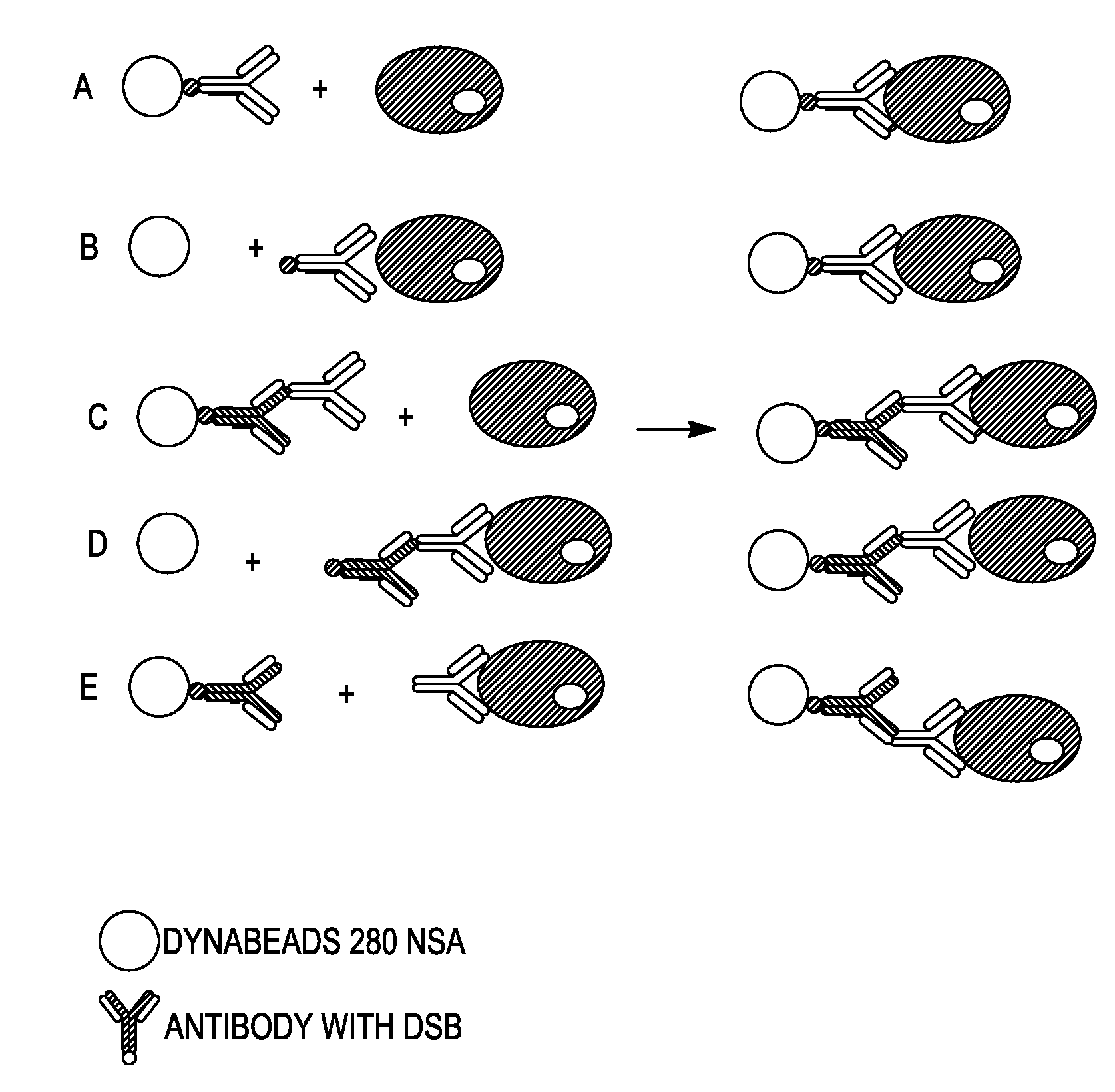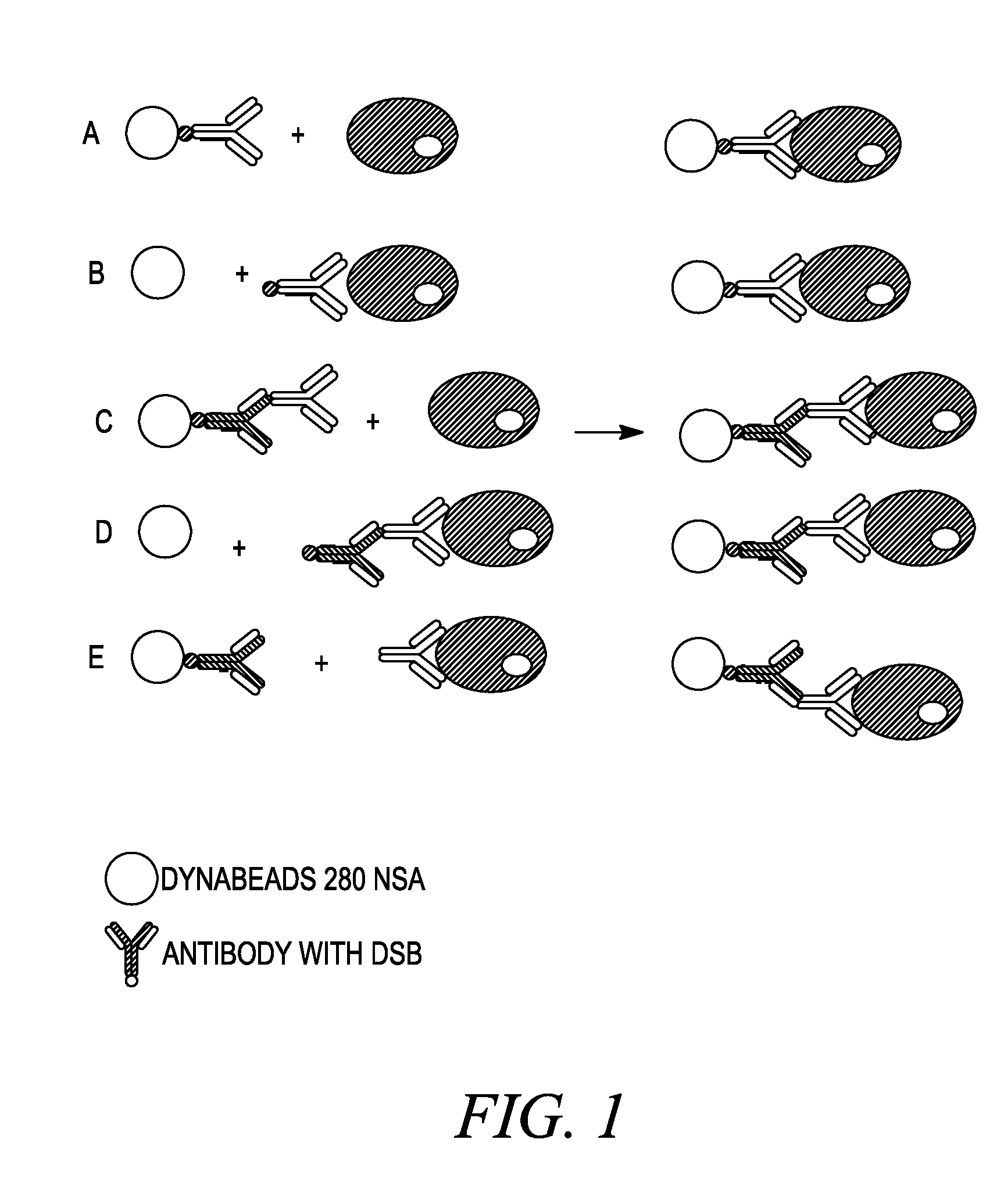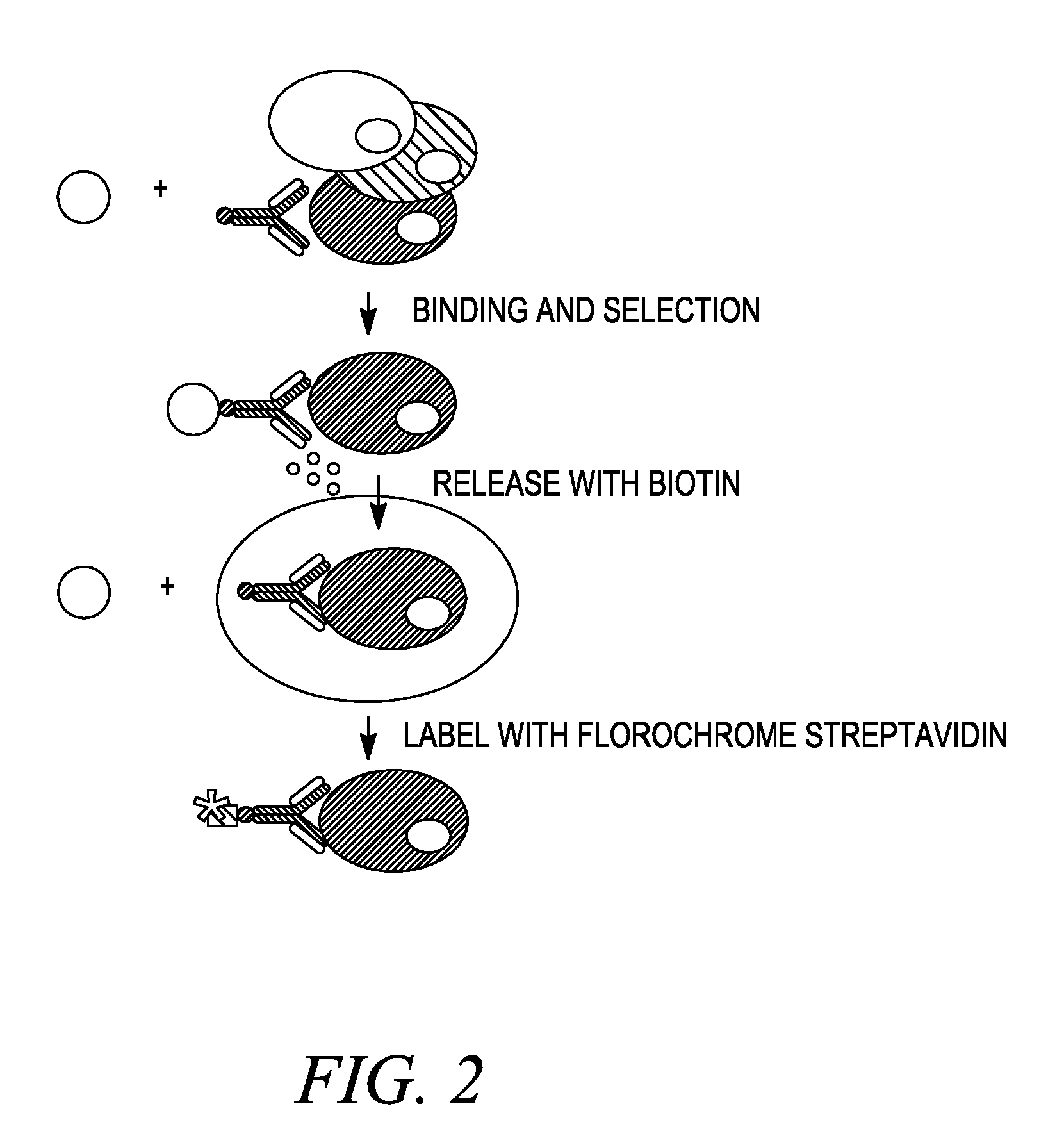Methods of reversibly binding a biotin compound to a support
a biotin compound and support technology, applied in the field of reversible binding a biotin compound to a support, can solve the problems of limited use, general undesirable, slow and complex approach, and less suitable for avidin than streptavidin
- Summary
- Abstract
- Description
- Claims
- Application Information
AI Technical Summary
Benefits of technology
Problems solved by technology
Method used
Image
Examples
example 1
BiaCore Data of Desthiobiotin-X / Streptavidin (DSB-X / SA) Interactions
[0181]Materials and Methods
[0182]1. Immobilization Procedure:
[0183]CM5 chips (BiaCore®, BiaCore AB, Uppsala, Sweden) were activated for binding of ligands such as streptavidin or CaptAvidin by using an Amine Coupling Kit from BiaCore. The procedure was followed as provided by the manufacturer. Shortly, EDC / NHS were exposed to the CM5 chip with a flow of 5 μl / minute for 7 minutes. The ligands were then exposed to the activated CM5 surface with a flow of 5 μl / minute for 7 minutes. The excessive reactive groups were deactivated by ethanolamine with a flow of 5 μl / minute for 7 minutes. The RU of ligands were in the order between 4000-19000 RU.
[0184]2. Binding of Analytes:
[0185]The CM5 chip with covalently bound ligand (either recombinant core streptavidin or CaptAvidin (Nitroavidin)) were exposed to analytes (either biotinylated or DSB-X™ biotinylated antibodies) with a flow of 5 μl / minute at a concentration of 50-400 μ...
example 2
Procedure for Nitration of Streptavidin and Coupling to Dynabeads
[0192]Materials and Methods
[0193]1. Preparation of Nitro-Streptavidin
[0194]Streptavidin (50 mg in 5 ml of 50 mM Tris buffer, pH 8.5) was treated with 60 mM tetranitromethane for 2 hours at 25° C. Nitro-streptavidin was purified by a NAP™-25 column (GE Healthcare Life Sciences).
[0195]2. Preparation of Nitro-Streptavidin Beads
[0196]100 mg Dynabeads® M-280 Tosylactivated was washed with 0.1 M phosphate buffer, pH 7.4 (3×3 ml) and resuspended in 1.8 ml 0.1 M phosphate buffer, pH 7.4. 200 μl nitro-streptavidin (10 mg / ml in PBS) followed by 1 ml 3 M (NH4)2SO4 in 0.1 M phosphate buffer, pH 7.4 were added to the beads. After 16 hours at 37° C. on a roller, the beads were washed with 3 ml 50 mM citrate / phosphate-buffer pH 4.0 and resuspended in 3 ml. 100 μl biotin (10 mg / ml in DMSO) were added to block the unmodified biotin binding sites. After 30 minutes, the beads were washed with 3 ml 50 mM carbonate buffer pH 10 to release ...
example 3
Methods Used in Different Cell Isolation Procedures as Shown in FIG. 1
[0225]Materials and Methods
[0226]Antibodies used were mouse anti-CD45 antibody, clone EO1, either DSB-labeled or not, and human anti-mouse IgG antibodies, clone HAM6, DSB-labeled.
[0227]I) Culture and Washing of Cells:
[0228]1. Grow Daudi cells in RPMI 1640, 10% FCS and 1% Na-pyruvate at 0.3-0.5×106 cells / ml. Split 24 hours before use.
[0229]2. Wash cells in was-buffer (DPBS, 0.1% BSA and 2 mM EDTA). Centrifuge at 300×g for 8 minutes at 2-8° C. Resuspend in wash-buffer at 107-108 cells / ml.
[0230]II) Sensitize Cells with Antibody:
[0231]1. Add 0.5 μg antibody (anti-CD45 antibody, either DSB-labeled or not) per 106 cells to washed cells at 107-108 cells / ml
[0232]2. Incubate at 2-8° C. for 10-15 minutes (or on ice for 30-45 minutes)
[0233]Wash cells once by adding 10× excess volume of wash-buffer, centrifuge at 300×g for 8 minutes at 2-8° C. Resuspend cells in wash-buffer at 107-108 cells / ml.
[0234]3. Alternative: cells are ...
PUM
| Property | Measurement | Unit |
|---|---|---|
| pH | aaaaa | aaaaa |
| temperature | aaaaa | aaaaa |
| temperature | aaaaa | aaaaa |
Abstract
Description
Claims
Application Information
 Login to View More
Login to View More - R&D
- Intellectual Property
- Life Sciences
- Materials
- Tech Scout
- Unparalleled Data Quality
- Higher Quality Content
- 60% Fewer Hallucinations
Browse by: Latest US Patents, China's latest patents, Technical Efficacy Thesaurus, Application Domain, Technology Topic, Popular Technical Reports.
© 2025 PatSnap. All rights reserved.Legal|Privacy policy|Modern Slavery Act Transparency Statement|Sitemap|About US| Contact US: help@patsnap.com



